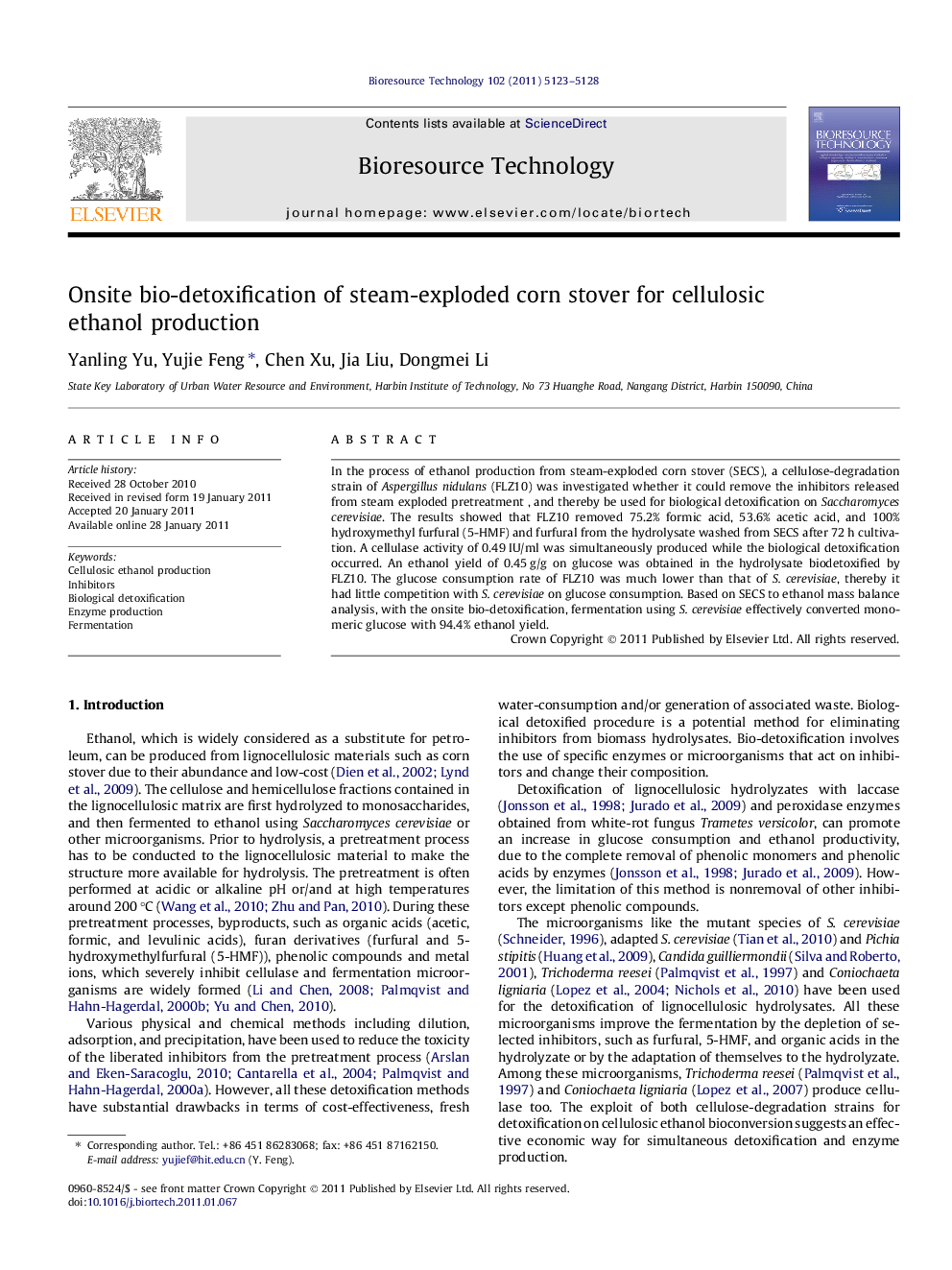| Article ID | Journal | Published Year | Pages | File Type |
|---|---|---|---|---|
| 10395121 | Bioresource Technology | 2011 | 6 Pages |
Abstract
In the process of ethanol production from steam-exploded corn stover (SECS), a cellulose-degradation strain of Aspergillus nidulans (FLZ10) was investigated whether it could remove the inhibitors released from steam exploded pretreatment , and thereby be used for biological detoxification on Saccharomycescerevisiae. The results showed that FLZ10 removed 75.2% formic acid, 53.6% acetic acid, and 100% hydroxymethyl furfural (5-HMF) and furfural from the hydrolysate washed from SECS after 72Â h cultivation. A cellulase activity of 0.49Â IU/ml was simultaneously produced while the biological detoxification occurred. An ethanol yield of 0.45Â g/g on glucose was obtained in the hydrolysate biodetoxified by FLZ10. The glucose consumption rate of FLZ10 was much lower than that of S. cerevisiae, thereby it had little competition with S. cerevisiae on glucose consumption. Based on SECS to ethanol mass balance analysis, with the onsite bio-detoxification, fermentation using S. cerevisiae effectively converted monomeric glucose with 94.4% ethanol yield.
Related Topics
Physical Sciences and Engineering
Chemical Engineering
Process Chemistry and Technology
Authors
Yanling Yu, Yujie Feng, Chen Xu, Jia Liu, Dongmei Li,
